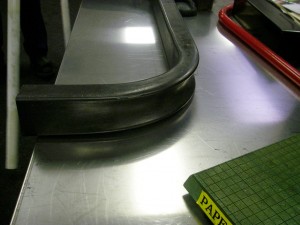The best way to determine if steel tube bending can achieve a given radius for given steel sections curved in a given orientation is probably through trial and error. Companies that specialize in curving steel often keep records of what can be done and with what success. With all the sizes of tubing available that could be rolled in innumerable ways, however, it is inevitable that a rolling company will encounter requirements that it has not seen before whether the request comes from an original equipment manufacturer (OEM) or from a structural steel fabricator.
OEMs seek to continually improve their products while reducing lead time (including R&D lead time), reducing cost, and improving quality. It seems like the larger the OEM, the more demanding the requirements, but these challenges are often offset by the potential reward of large volume, repeat orders for a rolling house.
Design engineers often specify bent or rolled tubing to become component parts of the equipment they are manufacturing. In the best of circumstances the engineers at the OEM work closely with the bending suppliers to develop the optimal design for manufacturing and for the final product.
For example, a series of designs were developed with samples provided for the steering mechanism on a zero-turn mower. The final design called for a 3 x 2 x 1/8 rectangular tube bent to form a flat back U with a 4-1/8in radius on two 90 degree bends. Unlike most tube bending, however, the design called for significant concavity on the inside and outside of each of the two bends.
Through trial and error, the design engineers working with the rolling house created a part that with its concave bends was actually stronger for its application that without the concavity.
To a certain degree, the decision of whether a radius can be achieved can be answered by interpolation. For example, since we have rolled an 8 x 8 x 1/4 tube to a 15ft radius and to a 25ft radius with no distortion, we can assume we can roll this tube to a 20ft radius with no distortion.
But when you start pushing the limits on minimum bending radius and start varying the wall thickness, for example, interpolation doesn’t always work that well.
Benders and rollers are always trying to curve parts that they had never done before. The result is that new solutions are discovered every day that add value to projects.








